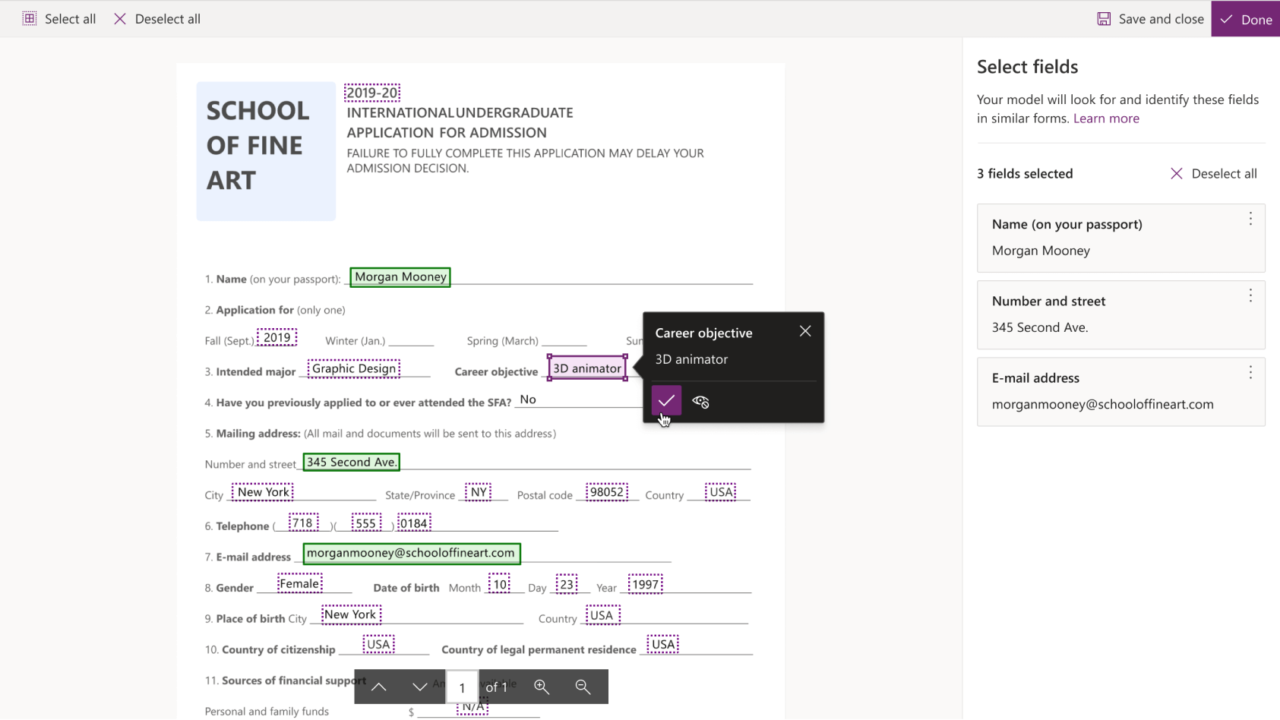Businesses can thrive without data science or coding knowledge. Microsoft’s AI Builder expands your app capabilities and turns you into a programming genius.
You may be a new company trying to keep up with technological demands. Or you may be an older business trying to expand your digital capabilities. Either way, Power Apps empowered with AI Builder provide simplified solutions without extensive programming knowledge by adding data analysis and prediction algorithms.
AI Builder and Microsoft Flow come with prebuilt and customized models, each with a wide variety of applications and uses. Let’s check out what you can do with them.
Vision Capabilities With AI Builder
Do you have filing cabinets of old records to organize? Do you have clients confused by or afraid of technology? Businesses who need to make sense of paper records have a powerful solution in these vision-based AI models.
Models in this group leverage AI Builder’s ability to “read” handwritten text and grab the relevant information. It does this with optical character recognition, or OCR. Since many of us don’t fully live in a digital world, we still have paper forms to deal with. AI Builder’s vision capabilities save time and avoid human error by automating data entry processes. These models can reduce your business’ paper trail and help organize your records.
Text Recognition
This basic model scans a document for handwritten or printed text and converts it to a machine-readable string of type. This model is useful for businesses that wish to save older records such as written correspondence without the bulk of paper records. It works in seven different languages: English, French, Dutch, German, Italian, Portuguese, and Spanish.
All of the models in the visual group build from this one with additional features.
Business Card Reader
If you’ve collected a stack of business cards over the years, here’s a way to organize those contacts without manually entering and updating them.
The business card reader AI model works by scanning business cards and extracting data in a simple format. It’s similar to the text recognition model, but with added functions to recognize elements like photos and contact details.
Transferring your contacts from business cards to digital form makes them searchable and easier to update future changes.
Form Processing
This is another model that expands on the capabilities of the text recognition model. Instead of basic letters, the form processing model extracts data from written forms and converts them into digital files. This could work with tax forms, job applications, or even customer feedback forms. Train this model to work with any form you need, and it can pull the data into a workable digital format for easy data entry and sorting.
The form processing model can be a boon for accountants working with complex tax forms, small businesses working with written customer feedback forms, and more.
Object Detection
Have you ever gone to a big box store and asked the staff to check for a certain item at nearby stores? Now you can do the same.
This AI model is useful for retail businesses for offsite inventory management. It analyzes images of your products and matches to your inventory, leaving employees free to focus on customer interactions. They need only look through the computer system to know how many of a given item is in stock.
Receipt Processing
This model works in a similar manner to the text recognition and form processing models by reading information from receipts. This specialized model is useful for accounting purposes, allowing you to extract purchases without manual entry.

Language Capabilities With AI Builder
Language-focused AI models go beyond seeing the words on a page and analyze them for content. These models automate the processes of sorting communications, leaving you with more time to address and respond to them. This has useful applications in communicating with large groups, helping you to prioritize and organize feedback.
Language Detection
The language detection AI model analyzes short texts to determine the dominant language. It’s similar to Google’s Translate program. Businesses can use this function to route customer feedback and queries to a dedicated representative who understands their language. This model works with a long list of languages that Microsoft continues to expand.
Category Classification
Email clients and blogging hosts have spam detection down to a science. Category Classification gives you the same function and more.
It works by sorting incoming communications into your choice of categories, such as spam or customer inquiries. Spam filters ensure that correspondence from customers won’t get buried, and customer inquiries go to the appropriate department. Your team won’t have to sift through a mountain of messages to find legitimate feedback or requests.
Keyword Extraction
The keyword extraction AI model scans text input for certain phrases and pulls up the relevant entries. Think of it as a search engine on a smaller scale. This model can automate the sorting of customer feedback and identify areas of improvement. A restaurant business can utilize this model to find feedback on specific dishes or waitstaff without wading through pages of complaints or testimonials. An IT professional can use keyword extraction to identify issues throughout an office.
Sentiment Detection
The sentiment detection model is a way to analyze customer input from social media, reviews, or any text input. The program works at the sentence level and document level, giving each sentence a score for positive, negative, or neutral sentiment. It then returns an overall sentiment analysis based on the combination of sentence scores.
This model can be useful for a quick analysis of multiple text inputs, giving the business a feel for customer satisfaction before you read the reviews. It allows for faster decision making at a management level. It also works with a long list of other languages.
If you’ve used Grammarly before, you’ve noticed it comes with a tone detector. This model works very much the same way.
Imagine using this model in conjunction with keyword extraction for feedback on a new product, or combined with language detection to see how customers in different countries or ethnic groups feel about your business practices.
Prediction Capabilities With AI Builder
Prediction models work by analyzing existing data from your business. It uses that data to form patterns and predict future outcomes. It works with three types of predictions:
- Binary: Predictions that call for a yes/no answer, or any question for which only two answers are possible. An example could be predicting whether a customer will respond to a certain marketing campaign.
- Multiple Outcome: These predictions call for more than two possible outcomes. Example: What kind of product could we market to this customer?
- Numerical: Predictions that call for a number as the answer. An example could be for calculating shipping times.

What’s Next?
With AI Builder, the possibilities are endless. Dynamic Consultants Group is your partner for all things Power Platform. This includes Power Apps, Power Automate and Power BI. We customize Dynamics 365 and develop both model-driven and Canvas apps to suit your business requirements.
To get started with implementing AI Builder and Power Apps, contact us today. Our team of consultants can bring simplified automation to your organization and supercharge your insights.



